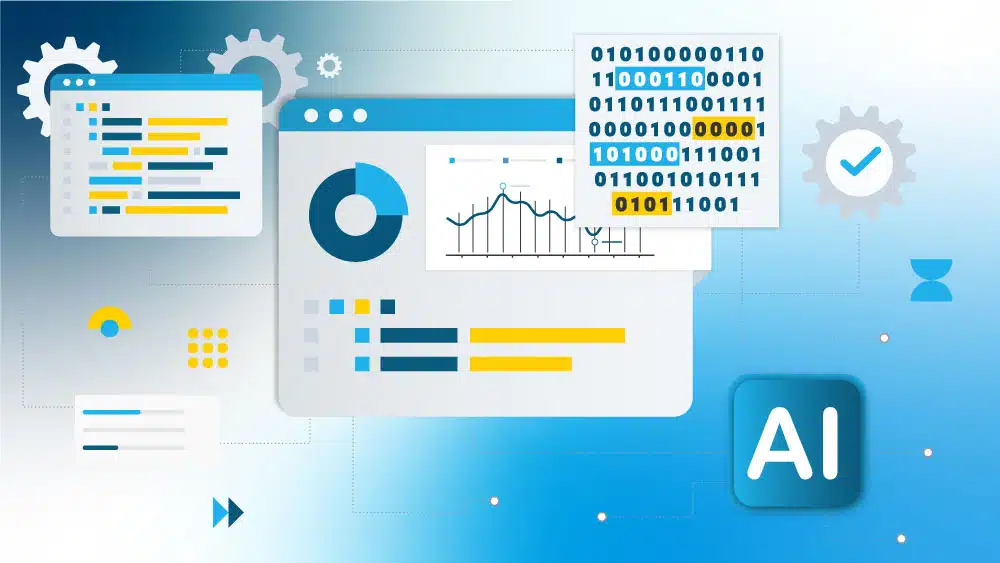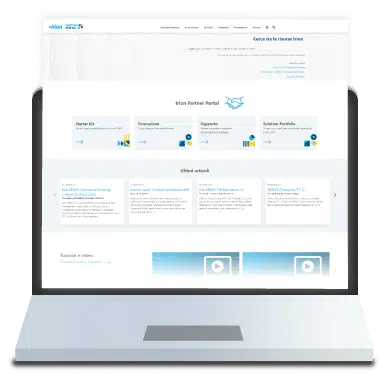If your company has ever wondered, “Why don’t the numbers in the CRM match those in the ERP?” or “Why don’t the e-commerce sales align with the payment gateway data?”, you’re not alone. It often happens, for example, that treasury balances show
These inconsistencies are common, as data within organizations flow across different systems, heterogeneous formats, and fragmented processes — even more so following operations such as M&A (mergers and acquisitions). Each business function typically has its own master information system and several satellites, more or less structured:
- An ERP system for invoicing
- A CRM for customer records and interaction history
- An e-commerce platform for online sales
- A system for managing employees
- Trading platforms for financial transactions
- Company shops integrated with social networks
- Consumption measurement and billing systems in the energy and telecommunications sectors
- Production planning and management systems
- Logistics platform
- … and so on and so forth.
Each of these tends to speak a different language and generates data with different volumes and timings. So what is Data Reconciliation? In simple terms, it is the process of comparing two or more sets of data to ensure accuracy, completeness, and consistency. The alternative is
And how much valuable time could I save by freeing them from manual balancing and reconciliation tasks in Excel?
Two typical scenarios (and a clarification)
An important consideration: the purpose of reconciliation is not necessarily to establish a single source of truth. The primary objective is to find discrepancies, identify errors, and align figures so that reports and processes are reliable, both within the company and in the supply chain.
Two types of situations therefore emerge:
- “Pure” reconciliation. In many scenarios, the goal is to reconcile data between different systems: verify that two or more data sources give the same result (the outputs will be reconciliation results, discrepancies, alerts, operational reports) …perhaps with the need to correct data or explain differences.
- In other contexts, the project may evolve towards Master Data Management (MDM) in which, starting from multiple sources, a reference database (master source) is defined and maintained, for example, of customers, products, economic conditions, and hierarchies, which will be used in downstream processes.
Why it is urgent to reconcile data sources
In an increasingly complex environment, many critical business processes depend on constant alignment between information systems. That’s why data reconciliation has evolved from a periodic closing and accounting activity to a continuous driver of efficiency and reliability for CFOs, Operations, and IT.
In times of tight margins and volatile consumption, for example, having scalable sales data reconciliation solutions is a competitive necessity. Irion EDM tackles the challenge at its root: it integrates flows, normalizes SKUs (stock keeping units), currencies, and fiscal calendars, and applies multi-key matching rules with predefined tolerance thresholds. This way, the board receives accurate and timely figures.
Differences between reconciliations and validations
A frequently asked question concerns the difference between data reconciliation and validation. Although both contribute to overall data quality, they operate at different stages and with distinct objectives.
- Data type check: verify that numbers are entered in an integer field instead of text
- Range and constraint checking: ensuring that values fall within predefined ranges (e.g., geographic coordinates, non-negative values)
- Format checking: ensuring that dates, postal codes, or other data follow specific and consistent formats
- Uniqueness check: verify that fields such as email addresses or identification codes are not duplicated
- Logical consistency check: ensuring that, for example, a delivery date is later than the shipping date
Validation occurs during data acquisition or preparation, cleaning, correcting, or rejecting incorrect entries directly before they pollute analyses, reports, or machine learning models. It’s like proofreading: you identify typos and grammatical errors before publication, not after readers have pointed them out. In short: validation answers the question “Is this data formally correct and does it comply with the rules?”, while reconciliation answers “Does this data from different systems represent the same reality?”.
Validating means rejecting an order with a negative quantity before it enters the database; reconciliation detects when that same order appears in the warehouse system but not in the accounting software. Validation cleans up data internally, while reconciliation ensures consistency between multiple datasets externally. Both are necessary to have complete confidence in your data.
Four major risks of inconsistent data
Companies that manage to align data from all sales channels (proprietary or third-party e-commerce, stores, distributors, local agents, and social media) can see double-digit increases in turnover, but above all, reduce revenue dispersion (BCG/Google report). According to other studies, incomplete reconciliations subtract up to 1% from retail turnover, while 1/3 of commission calculation errors stem from Excel spreadsheets without quality controls. Let’s summarize the main risks:
- Financial risk: errors in commission calculations, revenue leakage, delays in monthly accounting closures. According to some analyses, one-third of commission calculation errors stem from Excel spreadsheets that lack adequate quality controls.
- Operational risk: decisions based on inconsistent data, process inefficiencies, duplication of efforts to “search for the truth” in the numbers. Controllers can spend days manually reconciling data between CSV files and pivot tables.
- Compliance risk: regulatory violations, especially in regulated sectors such as banking and insurance. Regulations in regulated sectors (banking, insurance, pharmaceuticals, energy) impose strict standards on data quality and consistency.
- Reputational risk: loss of trust by stakeholders, investors, and customers when significant discrepancies emerge in financial statements or communications
Beyond Excel: a modern reconciliation process
Whether calculating commissions or reconciling trading positions, the challenges and functional requirements are the same: scattered and misaligned spreadsheets cannot handle this complexity. A modern reconciliation process, managed by a robust and dedicated platform such as Irion EDM, is based on five fundamental steps:
- Data Ingestion: acquire flows from all source systems, via connectors for ERP, e-commerce, POS, CRM, or by reading data from legacy systems; with the possibility of also including multimodal data sources (e.g., PDF invoices attached to emails and other unstructured documents) that introduce different complexities compared to interfacing with structured data such as relational databases.
- Data Normalization: “translating” data into a common language. This means mapping SKUs, currencies, VAT rates, and tax calendars, and normalizing attributes that require it for comparability purposes.
- Data Reconciliation (matching): this is the heart of the process. Multi-key matching rules are applied and exceptions are handled intelligently, using tolerance thresholds (for amounts that differ by a few cents) and whitelists to ignore known and irrelevant discrepancies.
- Calculation Engine: reconciliation is not just comparison, it is also calculation. A centralized rules engine is needed to manage the complex logic of commissions, rebates, accruals, or fees and penalties.
- Governance & Audit: the process must be transparent. This means having versioning of rules, data lineage, and dashboards that show business KPIs, produce the necessary reports, and send automatic notifications for exception management.
Data reconciliation use case: from finance to e-commerce
- Listed derivatives reconciliation: daily alignment of front, middle, and back office data in the banking sector (listed/OTC derivatives, cash positions, and collateral), integrating trading and accounting systems; critical operations for the start of daily operations, with normalization, multi-key matching rules, and production of results in dashboards and Excel; applies a transparent end-to-end approach to transactions and reduces operational risks
- Daily processing of large volumes: reconciliation between front/middle/back office and market counterparties on trades, positions, prices, and exercises; applies filters on homogeneous perimeters, targeted normalizations, whitelists, tolerances, and automatic alerts to synchronize flows; performs systematic and timely checks on large amounts of data.
- Financial message reconciliation: applied daily to incoming and outgoing messages, it aligns internal financial records using predefined matching keys, classifying anomalies (serious/warning), with drill-down and manual matching options; it ensures timely monitoring of inconsistencies and reduces verification times.
- Reduction in operating costs (e.g., digital payments) due to manual management of data inconsistencies
- Alignment of sales and payments (example: retail) between e-commerce orders and POS with invoices and inventory
- Commissions and retroactive discounts (example: sales network management) with centralized calculation and reconciliation on each order line
- Reconciliation of logistics activities (e.g., port services): calculation of base rates, alignment of surcharges and penalties with operational data, with the benefit of being able to calculate fees and commissions with complete transparency.
Irion capabilities (also) for data reconciliation
Irion EDM integrates ingestion, normalization, reconciliation, related calculations (commissions, rebates, accruals, retro-pricing), and all aspects related to data governance into a single environment. Rules are versioned and traceable; processes are repeatable and scalable; datasets are normalized and reliable, ready to feed artificial intelligence models. The platform enables:
- Automations and suggestions (metadata-driven): an underlying dictionary suggests key fields, thresholds, and rules, reducing errors and setup time.
- High performance execution: more frequent checks and results immediately available in dedicated dashboards
- AI/ML for matching: support for setting rules and tolerances with a rule-based and traceable approach
- Integrated workflow and alerts: orchestration of critical steps, email notifications, reports, and audit trails
From raw data to informed decisions
With Irion EDM Data Management Solutions, everyone within and across business areas speaks the same language: numbers are consistent and available at the desired frequency and with the desired notifications, data is normalized, qualitatively reliable, and accompanied by lineage: ready to feed Artificial Intelligence or Machine Learning models without additional cleaning activities.















